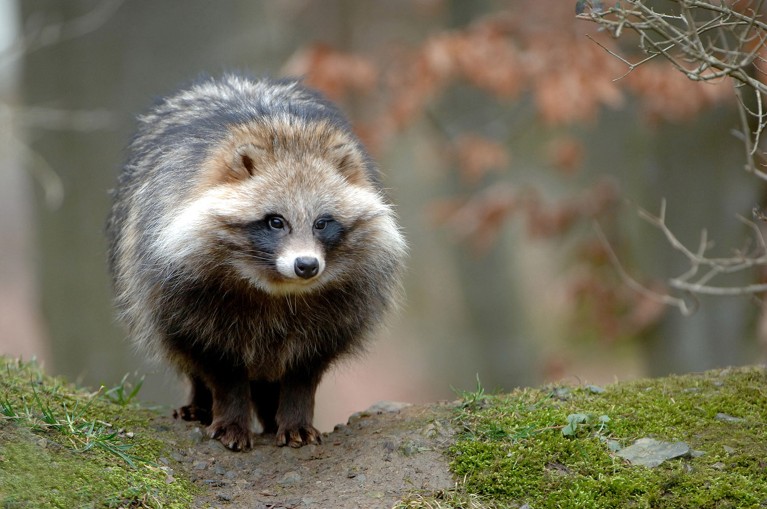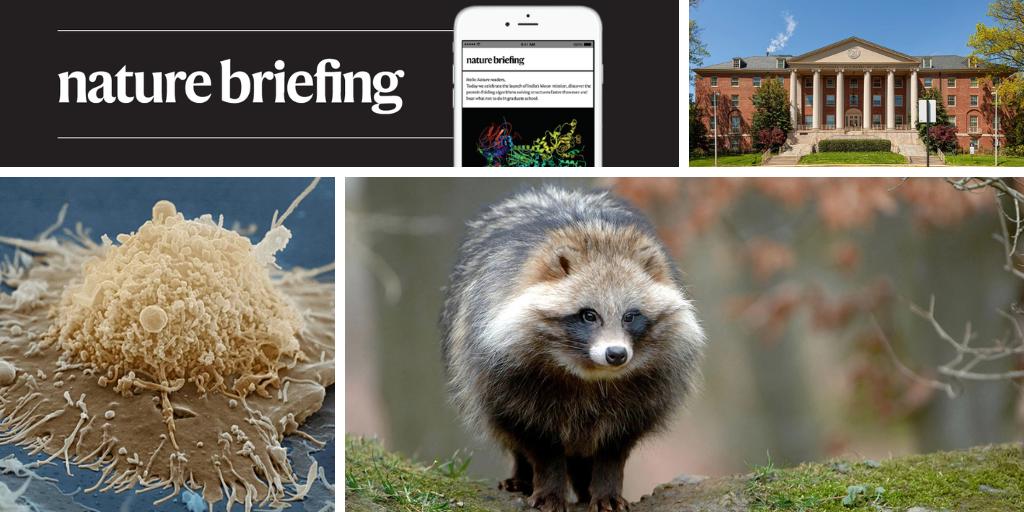Hello Nature readers, would you like to get this Briefing in your inbox free every day? Sign up here.

Raccoon dogs are eaten and used for their fur in some countries.Credit: Bernhardt Reiner/Prisma by Dukas Presseagentur via Alamy
Five years on from the beginning of the COVID-19 pandemic, scientists are still trying to pin down where the virus that causes the disease came from. The number one suspect is the raccoon dog (Nyctereutes procyonoides) because they were being sold at the market where scientists believe the first cases spilled over from animals to humans, and were probably involved in passing another, related, virus to people in 2003. However, raccoon dogs have been studied as viral hosts more than other animals, including ones also present at the market, says evolutionary biologist Michael Worobey. So, there could be other, less well-studied candidates.
Three weeks after the Trump administration issued a directive to freeze payment on all federal grants and loans, almost all grant-review meetings remain suspended at the US National Institutes of Health (NIH). This is despite a judge putting it on hold after lawsuits challenging the order’s legality. The freeze has continued thanks to a ‘loophole’ in the process that the administration is exploiting. To run a grant-review session, the NIH must post their plans on a publication called the Federal Register, which the Trump administration has halted. Some legal scholars say this approach to withholding funds is illegal.
Features & opinion
Neuroscientist Robin Mazumder proposes the concept of ‘neuromimicry’ to explore how we use the design of the brain to influence urban planning. For instance, we could separate the districts of a city by activity – as specific parts of the brain have specialized functions – to pool resources, and improve the experience of transport networks by making them better connected. “Neuromimicry points to how we can intentionally design evidence-informed thriving cities in a rapidly urbanizing world to support planetary health,” Mazumder writes.
Nature Human Behaviour | 9 min read
Andrew Robinson’s pick of the top five science books to read this week includes an environmental horror story in graphic-novel form and an explanation of how humans stay alive in a world of diseases.
A young man watches history repeat itself in the latest short story for Nature’s Futures series.
Racial discrimination could be eliminated from workers’ ratings by switching from a five-star system — which allows people to impart their personal opinions — to a thumbs up or down. In a study of an online platform that connected customers to workers who performed home repair jobs, researchers found that with a five-star rating system, people they categorized as ‘non-white’ had lower ratings and got paid less than their white counterparts. When they changed the system to thumbs up or down, which focused raters on simply marking the service as good or bad, the effect disappeared.
Nature Podcast | 32 min listen
Subscribe to the Nature Podcast on Apple Podcasts, Spotify or YouTube Music, or use the RSS feed.
Today, Leif Penguinson is scaling a sandstone cliff face in the Waterberg Plateau National Park, Namibia. Can you find the penguin?
The answer will be in Monday’s e-mail, all thanks to Briefing photo editor and penguin wrangler Tom Houghton.
This newsletter is always evolving — tell us what you think! Please send your feedback to [email protected].
Thanks for reading,
Jacob Smith, associate editor, Nature Briefing
Want more? Sign up to our other free Nature Briefing newsletters:
• Nature Briefing: Careers — insights, advice and award-winning journalism to help you optimize your working life
• Nature Briefing: Microbiology — the most abundant living entities on our planet — microorganisms — and the role they play in health, the environment and food systems
• Nature Briefing: Anthropocene — climate change, biodiversity, sustainability and geoengineering
• Nature Briefing: AI & Robotics — 100% written by humans, of course
• Nature Briefing: Cancer — a weekly newsletter written with cancer researchers in mind
• Nature Briefing: Translational Research — covers biotechnology, drug discovery and pharma


